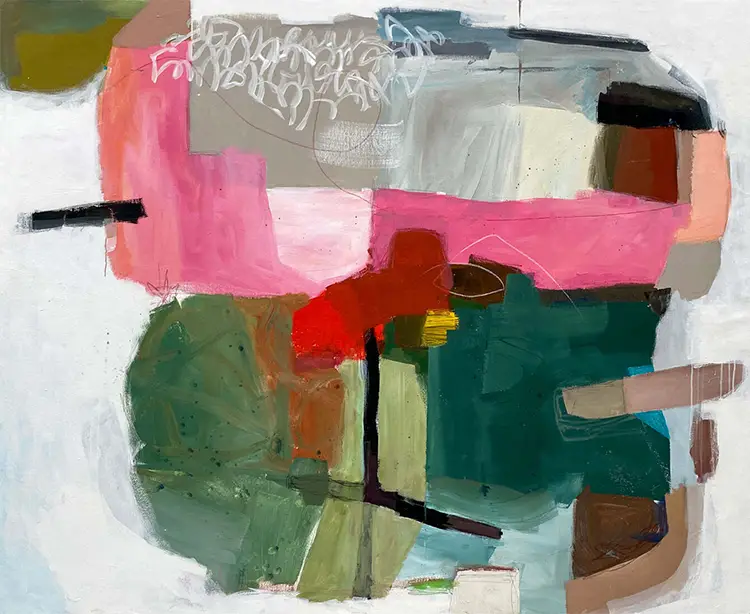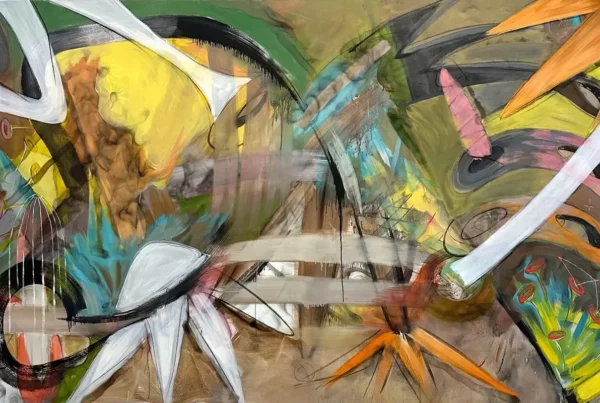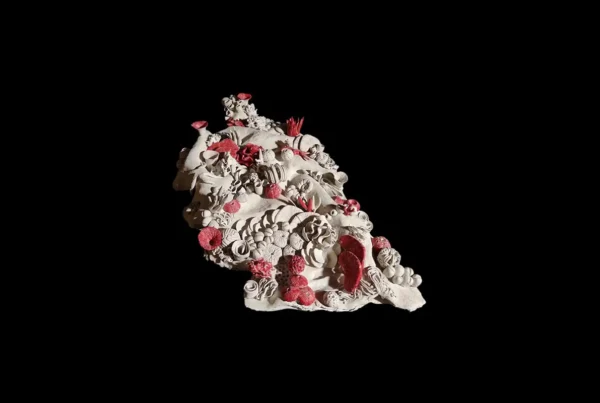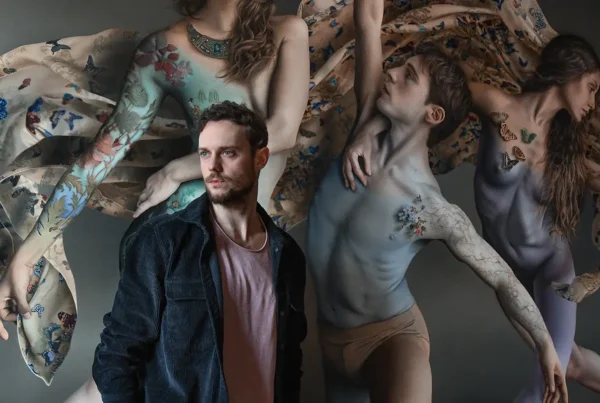Fragments of the Everyday, Reimagined
In a visual world dominated by clarity and literalness, Terri Froelich charts a compelling alternative—one where ambiguity becomes a tool and perception a playground. Based in Sausalito, California, Froelich is an abstract painter and photographer whose practice stems from a deep engagement with the overlooked. Rusted textures, entangled ropes, industrial decay, and the glint of shifting light are not simply objects in her gaze—they are triggers for complex visual dialogues. Her works, striking in their chromatic fluency and compositional balance, invite viewers to reconsider what they notice and how they interpret it. With a practice rooted in her daily walks and travels, Froelich transforms incidental encounters into layered paintings that feel simultaneously architectural and emotive.
The heart of Froelich’s practice lies in her sensitivity to visual nuance. Early encounters with photography sharpened her ability to isolate and reinterpret fragments of her environment. Whether examining a decaying wall or catching the shimmer of water, she captures fleeting relationships between form and light. These observations become the scaffolding for her paintings, which often straddle the boundary between memory and moment. Far from reproducing the world around her, Froelich reconstructs it—extracting geometry from chaos, rhythm from stillness. Her work doesn’t aim to depict reality but rather to respond to it, to distill its layered intricacies into compositions that pulse with internal logic and emotional charge.
Exhibiting both nationally and internationally, Froelich has gained recognition for the way she blurs mediums and influences without ever losing clarity of voice. Her paintings reside in the collections of private individuals and museums alike, a testament to their broad resonance and capacity to transcend geographic or contextual boundaries. For Froelich, meaning emerges not from literal representation but from the push and pull within each composition—the way elements interact, contradict, and ultimately reach an uneasy equilibrium. The universality of this tension, grounded in her local environment yet expansively interpreted, gives her work both its accessibility and its depth.

Terri Froelich: Light as Catalyst, Color as Voice
Froelich’s creative process begins long before brush meets canvas. Photography, once her primary medium, remains an essential preparatory tool—an instinctive way to capture spontaneous visual arrangements in her surroundings. These photographic moments often emerge during unplanned walks or during travel, when light, shadow, and texture converge unexpectedly. For Froelich, the camera is less a device for documentation than a mechanism for seeing. It enables her to frame fragments of chaos and discover compositional structures in the everyday. Over time, this habit has refined her ability to recognize visual patterns, which she then abstracts further in paint, untethered from their original context.
The evolution from photographic collage to pure painting was not abrupt, but rather a response to her shifting relationship with materials. Initially working with analog photography and mixed media, Froelich layered images with paint and found elements, building tactile works that bridged reality and interpretation. The transition to digital photography, while convenient, left her longing for the physicality that defined her earlier work. This absence compelled her to dive more fully into painting, where she could once again engage directly with texture and form. While her current paintings no longer include photographic elements, the discipline and compositional rigor of photography continue to inform each brushstroke and spatial decision.
At the core of Froelich’s work is an enduring fascination with light—not merely as illumination but as a force that animates and transforms. Light serves as her conceptual anchor, guiding her use of translucent paint layers, her manipulation of tone, and her orchestration of visual weight across a canvas. Whether inspired by the sun casting long shadows on an industrial surface or the glimmer of water reflecting sky, light acts as both subject and tool. In this sense, Froelich’s paintings become records of illumination—where the ephemeral is made enduring through gesture, hue, and balance.

The Architecture of Tension
The defining characteristic of Froelich’s paintings is a potent duality—an ever-present interplay between disorder and design. Her compositions are built around this central question: how can chaos be organized without neutralizing its energy? Drawing inspiration from organic disarray—like a tangle of fishing nets or the weathered hull of a boat—she breaks visual complexity into components, reassembling them into compositions that pulse with rhythm and restraint. There’s a distinct spatial intelligence at work, a balancing of positive and negative space that allows each element to breathe while still contributing to the overall tension of the piece.
Froelich doesn’t aim to resolve visual contradictions, but rather to hold them in dynamic balance. This philosophy manifests in her preference for recurring motifs that carry dual implications. A rope, when abstracted, becomes both a connector and a divider; a curved line might reference both architecture and anatomy. These motifs emerge not as symbols, but as forms with shifting resonance, depending on their placement and relationship to the surrounding shapes. The resulting works resist singular readings, instead offering an open field of interpretation where structure and spontaneity coexist.
Titles like “Floating Home” and “Shipyard” serve as quiet clues to the origins of her compositions, pointing toward specific places or concepts without imposing a fixed narrative. “Floating Home,” for instance, is not just about Sausalito’s houseboats but gestures toward larger ideas of impermanence and adaptation. “Shipyard” captures the poetic contrast between utility and decay. Froelich uses titles not as explanations but as invitations, encouraging the viewer to trace their own emotional or associative path through the work. This subtle guidance amplifies the psychological space within her paintings, making them not just visual experiences but contemplative ones.

Terri Froelich: Where Studio Walls Hold the Tide
The physical location of Froelich’s studio within Sausalito’s Industrial Center Building is more than a logistical detail—it is a crucial element of her practice. Perched beneath the Golden Gate Bridge, surrounded by shipyards and marinas, the building provides a constant influx of visual stimuli. Weathered textures, geometric hulls, and tidal reflections infiltrate her daily life, naturally filtering into her compositions. The proximity to water and industry forms an ambient context, shaping not only what she sees but how she thinks about form, structure, and transformation. The studio is not isolated from her work—it is embedded in its very vocabulary.
This immersion in her surroundings has a direct influence on the motifs that appear in her work. Structures like ropes, nets, or boat hulls are not painted as literal objects but are abstracted into compositional elements that retain a trace of their origins. A looping line might reference a knotted rope, while a broad, curved form might suggest the body of a vessel. These gestures retain the physicality of their sources but are reshaped to serve Froelich’s larger aesthetic goals. They form a lexicon of forms that recur across her canvases, always shifting, always evolving, never quite the same.
Froelich’s past exhibition at Kennedy Contemporary in Newport Beach marked a new chapter in her ongoing exploration. “Color, Shape and Sensibility,” a group show in January 2025, spotlighted the formal qualities that define her practice. Later this year, she will present “Abstract Forms,” a group show offering a deeper dive into compositional strategies and spatial tension. In preparation, Froelich continues to refine her layering techniques, exploring new ways to articulate the collision between rigid geometry and fluid gesture. The daily ritual of walking, photographing, and painting remains intact—a cyclical process that ensures each new piece begins not with a concept, but with a moment observed, transformed, and finally, composed.
This summer, Froelich’s work will also be featured in Beyond Representation, a group exhibition at the Sausalito Center for the Arts running from July 3 through August 9. The show brings together artists who explore abstraction as a vehicle for emotional resonance and conceptual depth. Through diverse approaches to line, color, and form, the exhibition invites viewers to look beyond the literal and engage with works that stir reflection, sensation, and interpretation. Open daily from 11:00am to 5:00pm, Beyond Representation offers a powerful testament to the vitality of non-representational art in contemporary practice.






